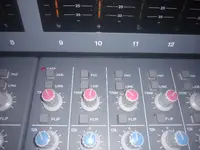B
bmg
Member
And this is the setting found under the media tab?
As for the resample modes - these should be set to the highest quality?
Almost every daw has some kind of clip gain feature where you can normalize your levelsThe more tapes I transfer, the more varying levels I'm encountering.
I'm keeping it all under clipping, but wondering if I'm being too conservative; some of the levels are reading -9, -12, etc.
I guess it's better to be under than over, but some of the quieter stuff I'm boosting a little, though I wish there was an easier way.
(Need to learn more about maximizing the input, while keeping it all under control.)
Peaks at -12 dBFS are fine. Conservative is good. Even if you were recording to 16 bit, your analog noise floor would be at least 20 dB above the digital noise floor. With 24 bit you've got another 50-ish dB of space down there.The more tapes I transfer, the more varying levels I'm encountering.
I'm keeping it all under clipping, but wondering if I'm being too conservative; some of the levels are reading -9, -12, etc.
I guess it's better to be under than over, but some of the quieter stuff I'm boosting a little, though I wish there was an easier way.
(Need to learn more about maximizing the input, while keeping it all under control.)
What he said! You don't realize how much headroom you have with 24bit. Just normalize after you finish recording it.Peaks at -12 dBFS are fine. Conservative is good. Even if you were recording to 16 bit, your analog noise floor would be at least 20 dB above the digital noise floor. With 24 bit you've got another 50-ish dB of space down there.
Yes. But sometimes it helps to adjust the levels of the tracks to make mixing easier. So you don't end up with some faders at +6 and others at -40.Normalizing has me a little confused.
If the signal to noise is no problem, why normalize?
Shouldn't the levels be fine as they are?
The analog console I'm using right now is an inline style on which each channel can handle live inputs and playback at the same time. When you push the Flip button, a lot of the functions used for live inputs get applied to tape playback, for example the gain control. So if you recorded a track a little low, you can boost it a bit so you're running your fader in a more normal range. The clip gain in a DAW does essentially the same thing.Normalizing has me a little confused.
If the signal to noise is no problem, why normalize?
Shouldn't the levels be fine as they are?

Yep.I see; like the trim knob.
Normalizing has me a little confused.
If the signal to noise is no problem, why normalize?
Shouldn't the levels be fine as they are?
